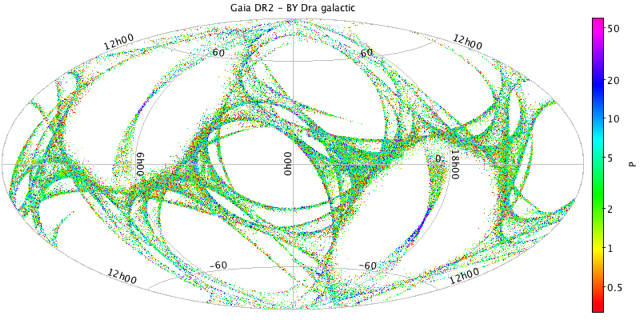Proteus Stars: the ESA-Gaia discovery of magnetic transitions in young stars

The second Gaia data release contains the identification of some 150000 low-mass rotational modulation variable candidates on (or close to) the H-burning main sequence, together with their rotation period and modulation amplitude, which represents the largest catalogue of this kind ever. The richness, the period and amplitude range, and the photometric precision of this sample make it possible to unveil, for the first time, signatures of different surface inhomogeneity regimes in the amplitude-period density diagram. The modulation amplitude distribution shows a clear bimodality, with an evident gap at periods P<2 days. The low amplitude branch, in turn, shows a period bimodality with a main clustering at periods of approximately 5-10 days and a secondary clustering of ultra-fast rotators at period approximately less than 0.5 day. The amplitude-period multimodality is correlated with the position in the period-absolute magnitude (or period-colour) diagram, with the low- and high-amplitude stars occupying different preferential locations. Such a multimodality represents a further evidence of the existence of different regimes of surface inhomogeneities in young and middle-age low-mass stars and possible scenarios for their magneto-rotational evolution, which manifestly include rapid transitions from one regime to another, are laid out. In particular, the data indicate that stars spinning up close to break-up velocity undergo a very rapid change in their surface inhomogeneities configuration, which is revealed by Gaia DR2 for the first time. The multimodality can be exploited to identify field stars of age approximately 100-600 Myr belonging to the slow-rotator low-amplitude sequence, for which age can be estimated from the rotation period via gyrochronology relationships. The implications in the formation of planetary system and in the star-planet interaction are also discussed.
